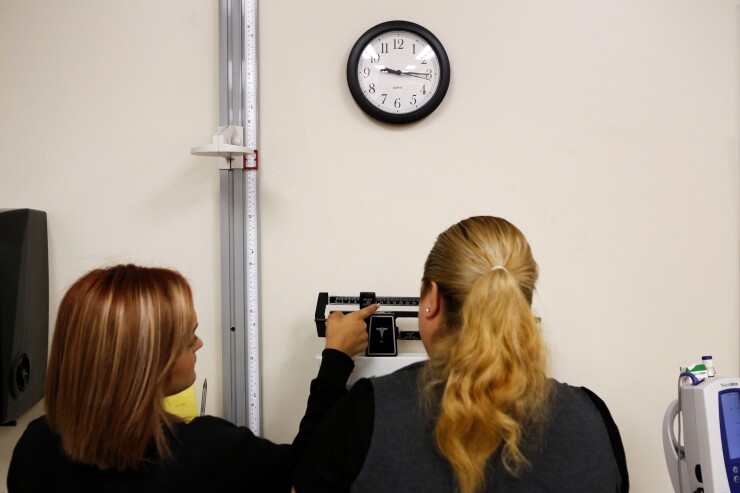The U.S. Centers for Disease Control and Prevention estimates that two out of every five Americans – fully 40% of us – will eventually develop type 2 diabetes. Citing widespread obesity as the main cause, the CDC calls this our “diabesity” epidemic. Their advice: We must combat obesity if we are to reverse the trend toward the increase of new diabetes cases.
Employers have been trying to do their part for years by making weight-loss programs available to overweight and obese employees, yet for most, obesity remains. That’s partly because traditional weight loss programs have had limited toolsets at their disposal, leaving them hamstrung as to what they can actually achieve. Enter the newer breed of weight-loss program that leverages the latest technology and clinical health tests to keep employees on a more sure-footed path toward improved health.

A common issue with traditional weight-loss programs is their emphasis on total pounds lost. While that emphasis seems appropriate, it’s actually counter-productive. To the obese employee, returning to normal body weight is a Herculean task. It also may not be necessary for combatting diabetes.
The Diabetes Prevention Program demonstrated that losing even 5% to 7% of total body weight can delay and possibly prevent type 2 diabetes. What the employee should be focused on is not the pounds, but the healthy, sustained behavior change for which weight loss is a byproduct. Health improvement can further be measured with common blood tests for obesity-related conditions, such as A1C, blood glucose, lipids and blood pressure.
Behavior change requires engagement, and traditional weight loss programs often fall short in two areas. The first is in initial health screening: When on-site screening is the only option, remote workers, traveling workers and those who are simply averse to completing a medical procedure in the workplace can be sidelined. For those who do participate, a lack of engagement tools and easy connection to next steps can cause significant drop-out rates – when employees are largely on their own to improve eating habits and exercise more, old habits quickly return, and the weight stays on.
To avoid the disappointments of past weight-loss programs, employers committed to fighting the diabesity epidemic should look to programs that harness the newest technologies for screening and engagement.
Biometric screening, which gathers key health information such as body mass index, blood pressure, cholesterol and glucose levels, can be strengthened by leveraging health screening technology platforms to let employees choose the screening method that’s best for them. For remote employees, frequent travelers and many others, the ability to take advantage of screening via at-home kit, at retail pharmacies or labs, or at their doctors’ offices can greatly increase participation and deliver that critical first step to change: awareness.
"The key is that the screening information be captured and transmitted immediately, accurately and privately."
The key is that the screening information be captured and transmitted immediately, accurately and privately through an appropriate electronic exchange system when shared with health coaches, case managers and professionals responsible for population health interventions. For higher analytic value, biometric data from lab testing should be merged with information from the employee’s health risk assessment.
The program should then use the biometric and risk assessment information to place each employee on a track personalized to his or her risk profile. It should also deliver rich engagement optimized for the individual’s needs, preferably leveraging smartphones and wearables. Engagement tools should allow goal setting and tracking of the employee’s preferred method of exercise. They should similarly track nutrition flexibly according to the individual’s needs (calories, carbs and/or fat grams), and combine that with activity and weight goal-setting and tracking.
When the biometric data indicate diabetes risk, engagement tools should direct employees to proven, targeted educational modules they can complete at their own pace to understand the need to address the condition now, along with encouragement to receive appropriate medical attention.
A well-designed weight-loss program that engages the maximum number of employees as individuals can go a long way toward combating diabesity. To extend that advantage to employee populations, it should offer aggregate reports by location, gender, age and other relevant denominators for year-over-year tracking and program refinements as needed.
Of course, a thoroughly successful weight-loss program depends on more than technology. It must be supported by executive teams and actively promoted to the employee base. Various forms of incentives have proven effective at increasing participation. Another successful trend is the subsidization of healthy food choices at workplace canteens and cafeterias. And coaching will always be at the center of programs where the attainment of goals requires behavior change.
Still, if the program leverages the latest technology for weight loss advantage, it can go a long way in avoiding the shortfalls of previous programs and in helping employers battle the diabesity epidemic.





